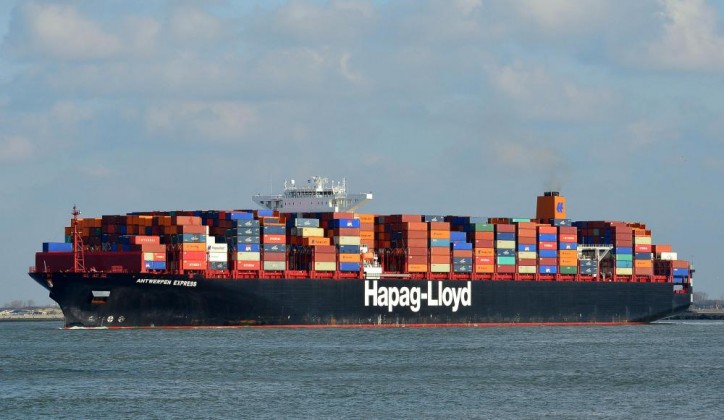In 2014, Hapag-Lloyd reported 2,620 cases of dangerous goods that were incorrectly declared and thus were prevented from being shipped. Hapag-Lloyd’s experts in the field of dangerous goods investigated more than 162,000 cases that seemed suspicious and recorded them via the use of a brand new watchdog software. The programme in question oversees Hapag-Lloyd’s cargo data and continuously examines it in order to identify anything conspicuous. It has a database featuring over 6,000 keywords, which according to the shipping company, is further developed and refined on a constant basis.

Photo: Arjan Elmendorp
Dangerous goods that happen to be declared incorrectly, imprecisely or are not declared at all can pose a grave risk to the vessels transporting them, to the respective crew members, to the environment as well as to all other cargo aboard alongside them. Up till now it was quite difficult to estimate the exact number of shipments of dangerous goods which were knowingly or unknowingly either declared incorrectly or were not declared at all.
“When regarding the total of six million standard containers that Hapag-Lloyd transports on an annual basis, the percentage of incorrectly declared shipments of dangerous goods might not look high, but when you put into consideration the fact that just a single container that was declared incorrectly is enough to result in a disaster, you get the clear absolutely devastating potential of each and every incorrect or non-declaration. Being among the market leaders when regarding dangerous goods transportation, we have constantly aimed our efforts towards finding a solution to the issue in order to guarantee a higher level of safety to our customers. If transported correctly the cargo doesn’t pose that high of a risk,” commented Ken Rohlmann, Hapag-Lloyd’s chief of the dangerous goods department.
“Other various shipping companies have demonstrated quite the interest in our new software technology, and that is only natural seeing as how the problem at hand is one of the main issues that the shipping industry as a whole has to deal with. The safer the sea transport system becomes, the better for everybody involved,” he further said when presenting the company’s watchdog software at a recent Port Safety Commission meeting in Hamburg.
The company has been putting a lot of effort into the development of watchdog software since back in 2011. Their experienced dangerous goods experts were essential for the programming of effective search routines. Hapag-Lloyd’s dangerous goods department was established roughly 50 years ago and was the very first of its kind in the whole shipping industry. Since that moment on, the company’s internal specifications regarding dangerous goods have been numerously used to form the basis for statutory regulations and have over the course of time become mandatory.